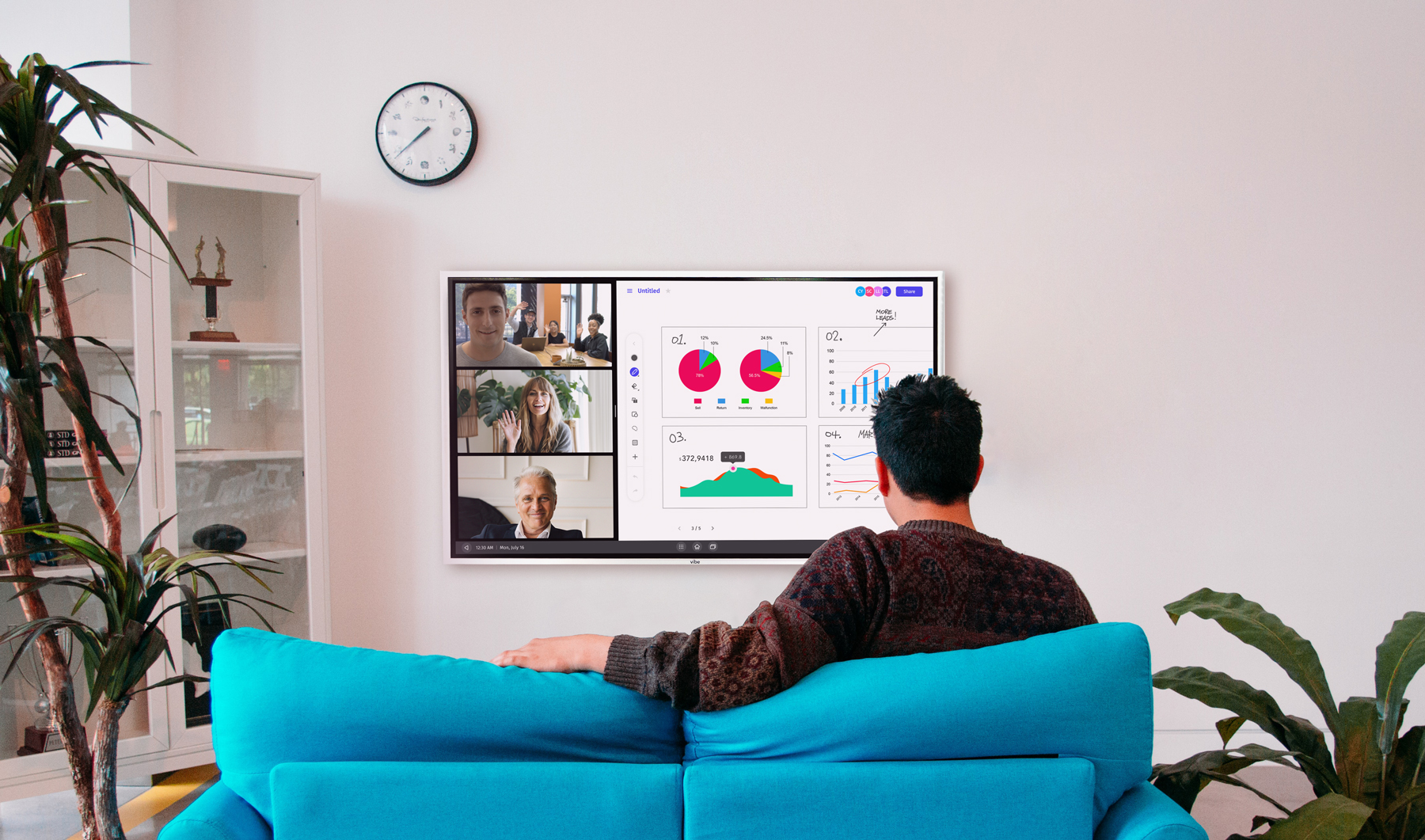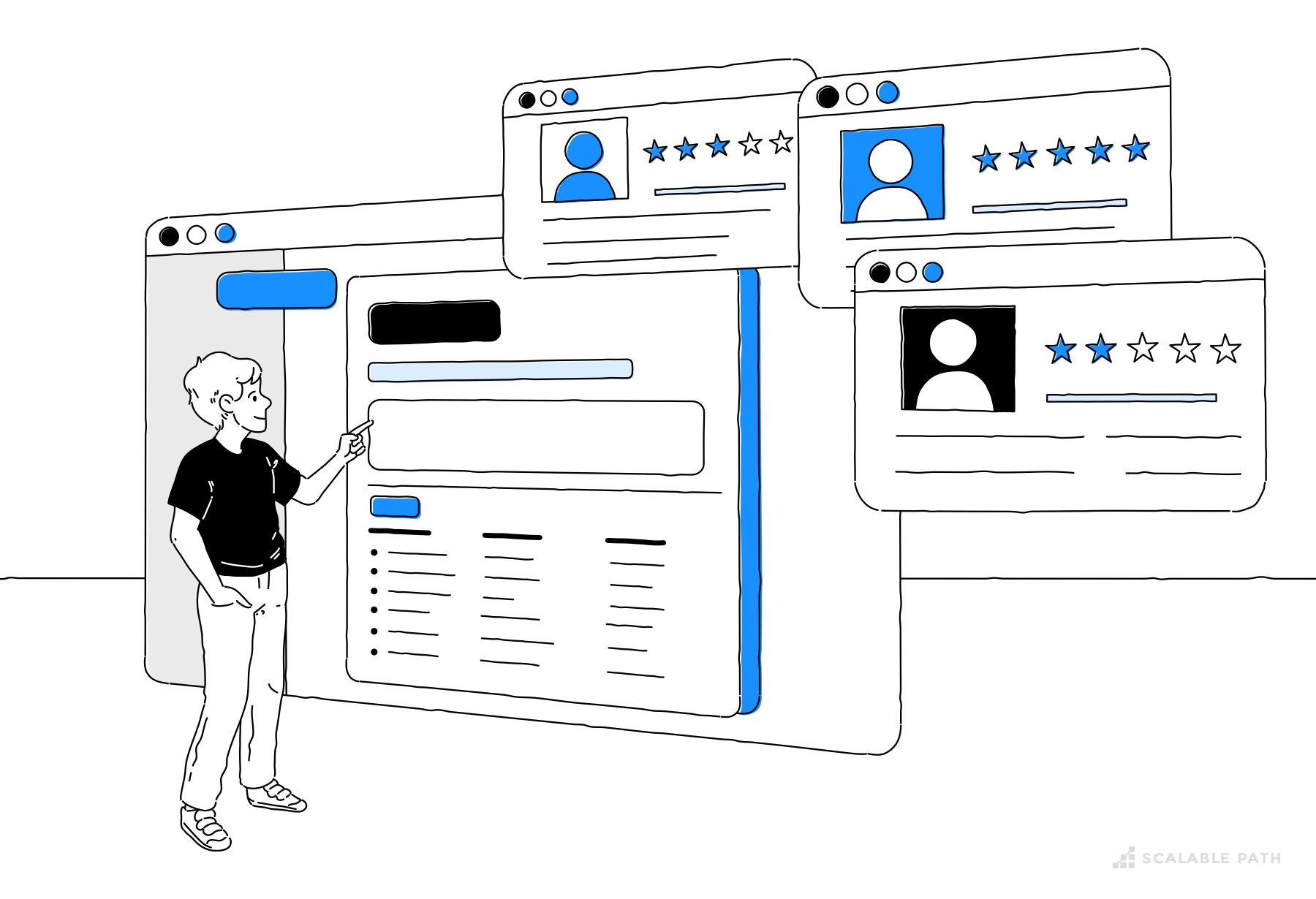Do you know who your employees are beyond their job title? What are their goals, interests, and struggles—and how are you supporting them? The barrier of remote work certainly doesn’t help you answer these questions. But whether you share the same building or the same digital drive, you can have meaningful connections with your team with the help of one-on-one meetings.
What is a one-on-one?
A one-on-one is an employee-focused meeting that allows a manager to support and connect with an employee through genuine conversation. When regularly scheduled, one-on-one meetings foster trust and respect between managers and their employees.
Why you should schedule one-on-one meetings
As a manager, you probably have an inbox full of emails, a calendar packed with meetings, and a million other things on your to-do list. So why should you care about scheduling one-on-ones with your employees? Here are some reasons why this type of meeting matters:
- Better understand and support your team. What are the unique qualities of your team members? Each employee has individual desires, frustrations, struggles, and wins. Get to know what those things are and act to support them.
- Help employees feel valued. Time is a precious resource. The act of giving our time to get to know another person is an act of respect. But using that time to also show you care makes all the difference.
- Harness employee insight. Employees are often your best resource for new ideas. Help your organization improve and thrive by turning to your team’s insight. To best capture these ideas, try brainwriting with your team.
- Build team unity. A successful team starts with a dedicated leader who genuinely looks out for their employees. Establish stronger ties in your organization by forming a healthy relationship with each employee.
- Respond to conflict more quickly. Depending on your organization, you may not directly work with your team every day. Rely on the eyes and ears of your employees to identify company pitfalls or rising drama among the team so you can quickly diffuse these situations.
- Incentivize your team with recognition. Nobody wants to come empty-handed to a meeting. When team members expect a regular one-on-one meeting with a manager, there’s a greater incentive to improve and bring positive results that they can share.
Why every remote team needs to have one-on-ones
Regularly meeting with each employee is important, but it’s absolutely essential for remote teams. Because remote workers often miss out on the daily conversation and shared experiences of a physical workspace, employees’ insights, successes, and challenges often slip through the cracks. Though there are tons of tools to boost remote employee engagement, personal connections can only be nurtured through regular communication.
Have you ever felt that an email sounded more harsh than the sender actually intended? Sometimes text can be misinterpreted without hearing someone’s tone of voice or seeing their body language. There are ways you can improve your asynchronous communication, but checking in with employees via a video one-on-one is the best fix.
 Mobile devices make it easy to connect with your remote team for one-on-one meetings.
Mobile devices make it easy to connect with your remote team for one-on-one meetings.12 steps to better one-on-one meetings
Before you start carving time out of your (and an employee’s) busy schedule for one-on-ones, make sure you’re prepared to make the most of these valuable meetings. Consider the following tactics for a successful one-on-one:
Before the one-on-one:
- Determine how often to meet (and stick with it!). According to industry leaders—like Facebook’s CEO, Mark Zuckerburg, and former Intel CEO, Andy Grove—one-on-ones should be scheduled weekly, or even bi-weekly to build a healthy relationship with your employees. However, choose a frequency that you’ll be able to maintain. You can always increase the frequency as you become more comfortable.
- Invite staff to choose a timeslot. Post a sign-up sheet on your door or in a shared digital doc for employees to select a time to meet with you. Make sure you indicate the length of the meeting. Alternatively, if your schedules allow for it, set up a regular meeting time with each employee to keep things consistent.
- Share the topics you each want to discuss. Send employees the questions and topics that you want to address during the meeting. Invite the employee to, similarly, send you topics that they may want to discuss. This helps you both come prepared with feedback, ideas, and concerns—and puts each person at ease knowing what to expect.
During the one-on-one meeting:
- Create a safe environment. Make employees feel at home, whether they are stepping into a physical office or a video conference call. Give them a warm greeting that shows gratitude for their time and contributions to the team. Keep meetings confidential by chatting somewhere free from lingering ears. However, if meeting in person, choose a place that’s still visible to others.
- Personal questions before business. This isn’t an interview or a performance review. Always begin a one-on-one by asking the employee appropriate questions about their personal life. Not only will you learn more about them, but you’ll set the tone for the meeting to be a positive chat centered around them. Try some of these workplace-approved get-to-know-you questions for inspiration.
- Ask about their work successes. Invite employees to share their wins. Ask questions like:
- What is an accomplishment that you’re proud of?
- What characteristics set you apart as an exceptional worker?
- How have you positively impacted a client or customer?
- Unify the whole team. One-on-ones may only involve two people at a time, but they’re meant to build stronger bonds for the entire team. Ask each employee you meet with to recognize a coworker. Have them share a specific story of how another employee helped them or went above and beyond. Not only does this encourage the team to see the good around them, but it also inspires them to be the good.
- What are some of their concerns? Are there any projects that they’re struggling with? Is there any conflict that they need help resolving? Be ready to provide counsel and assistance. However, sometimes all an employee needs is an active listener.
- Follow up on previous one-on-one. Ask the employee about their progress on previously discussed goals or concerns. Address recurring issues and make a plan together to resolve problems and meet expectations.
- Take notes during the meeting. Keeping track of what was discussed in each one-on-one will allow you to follow up with the employee regarding their goals or concerns. Pen and paper is best for this. You can later transfer topics discussed or actionable items to a kanban board for future reference.
After the one-on-one:
- Follow through with promises. One-on-ones may add some new tasks to your to-do list. Maintain employee trust by actually doing the things you agreed to help with. Make prioritizing your long list of tasks easier with an action priority matrix.
- Share employee success stories. Boost team morale and encourage hard work by sharing employees’ good deeds with the whole team. Whether you spotlight success stories in daily stand-up meetings, a group chat or email, or a weekly video conference call, help employees feel appreciated and recognized for their merits.
 Schedule in-person one-on-one meetings with your remote team members when possible.
Schedule in-person one-on-one meetings with your remote team members when possible.Go the extra mile with these helpful tips
Your employees should always be the focus of the one-on-one. Make these meetings as beneficial as possible for them by trying the following:
- Be adaptable. Although it’s important to have set topics and questions in place, let the needs of the employee direct your one-on-one. They may have specific concerns to address, successes to share, or may simply need a listening ear about personal struggles affecting their performance. Each one-on-one will be as unique as your employees.
- Remove distractions. Give your full attention to the employee. Don’t answer phone calls or texts during their one-on-one meeting. If meeting in person, step away from your computer and put away electronic devices.
- Create a hygge workspace. The Danish art of hygge centers around creating a cozy and comfortable space. Make employees feel at home by applying hygge principles to your workspace. Place a lamp with soft lighting on your desk, offer a comfortable seat to employees, and have small treats or a beverage available to those you meet with.
- End on a positive note. Each employee should leave a one-on-one feeling better about themselves, the work that they perform, and know that you genuinely care. Remember that one-on-ones are more than just a review of job performance — they’re a chance to support and connect with your employees.
Our global team knows the importance of staying connected—which is why Vibe’s interactive whiteboards are designed to help remote workers efficiently collaborate. Check out a Vibe demo today to see how our products can support the unique needs of your team.







-1sbltxxq4FYxHrXrwJVLsCDNsXpqNa.webp)
-5Zp0pmSytvcuYDVs1LvuwplKuRneK0.webp)
